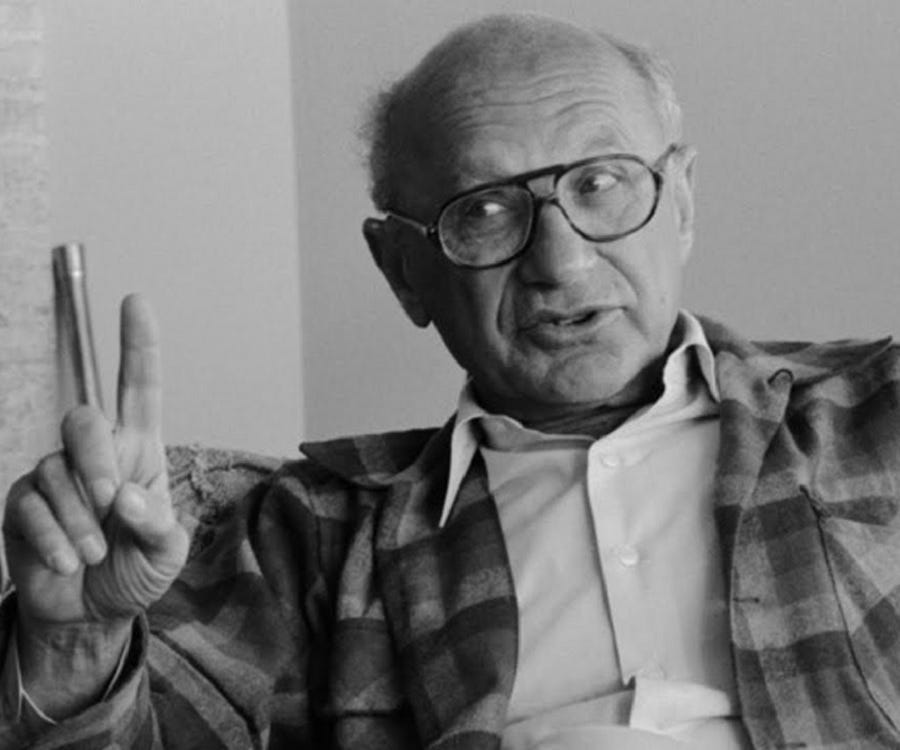Why Joan Robinson Blamed Unions for Inflation While Milton Friedman Did Not
Why did left-wing Keynesians like Joan Robinson see trade unionism as a key cause of high inflation, while Milton Friedman and his monetarist followers insisted that unions were not to blame?
In the late 1950s it dawned on the world that inflation — for the first time in history — had become a chronic, permanent peacetime condition. The puzzle that was on the minds of economists and policy makers worldwide was why. In an August 1957 article headlined “Basic Inquiry Into a Baffling Inflation,” New York Times economics correspondent Edwin Dale anatomized the ongoing debate among experts as a clash between two camps: what Dale termed the “Classicists” and the “New Inflationists.”
The Classicists believed that “the present inflation is not really peculiar, that it is caused by the same thing that has always caused inflation — too much money chasing the available supply of goods and services — and that the cure for it is tight money.” The New Inflationists, in contrast, contended that “this is something relatively new under the sun,” and that it stemmed from certain basic changes in the workings of capitalism: as Dale put it, changes in “the powers and practices of business (particularly big business) and labor (particularly organized labor).”
The New Inflationists were, of course, those who embraced the new view of inflation advanced by John Maynard Keynes and his Cambridge disciples. (Though some New Inflationists were pur jus believers in Keynes’s theory, most were not, so I’ll refer to the broader, heteroclite camp as “neo-Keynesian.”)
The neo-Keynesians’ analysis of “the new inflation” was grounded in Keynes’s cost of production–based theory inflation, in which the wage rate (relative to labor productivity) was seen as the key determinant of the price level. When that theory was joined to Keynes’s empirical observation that “in the modern world of organized trade unions and a proletarian electorate,” resistance to disinflation was “overwhelmingly strong,” the conclusion followed logically: trying to stop inflation by squeezing aggregate demand with high interest rates or government spending cuts could be effective only if the remedy were applied in such massive doses as to raise unemployment to wage-depressing levels that were — in the postwar world — politically infeasible, whatever one thought of their morality.
The distinctively “Keynesian” alternative remedy for postwar inflation was, instead, what became known as “incomes policy,” a catchall term for any initiative — whether a government policy or a set of private agreements — aiming to intervene directly in the wage- and price-setting process, to deter or countermand inflationary behavior.
The logic of incomes policy flowed from the understanding that a wage-price spiral, like an arms race, is a collective action problem: a situation in which behavior that is individually rational is, in the aggregate, collectively ruinous. It’s in no one’s interest to force up their own wages (or prices) if doing so merely induces others to do the same, wiping out any initial advantage gained. In such a situation, everyone is forced to run faster just to stay in the same place.
In 1925, when the success of Britain’s post–World War I economic policy had hinged on getting the price level down, Keynes had proposed, as an alternative to Winston Churchill’s brutal deflation, a “National Treaty” in which trade unions, employers, and others would mutually agree to accept a reduction in their money incomes by some flat percentage. But the scheme never saw the light of day, at least not in interwar Britain.
After the war, however, incomes policies along similar conceptual lines, though in disparate forms, proliferated throughout the world. Every industrialized country (and many others), faced with the novel problem of chronic peacetime inflation, turned to some form of “wage-price policy” — a now-forgotten subject that once occupied the attention of vast swathes of governmental and academic machinery in every major world capital.
For decades, the wage-price issue filled the newspapers daily with tortuous, dry-as-dust chronicles of pay advisory councils and labor-management accords, and spawned countless scholarly conferences and cabinet white papers. (Today, the New York Public Library catalog contains more items under the antiquarian subject heading “wage-price policy” than under “Robert F. Kennedy” or “Harry S Truman” — topics that some people, at least, still find interesting.)



nerd